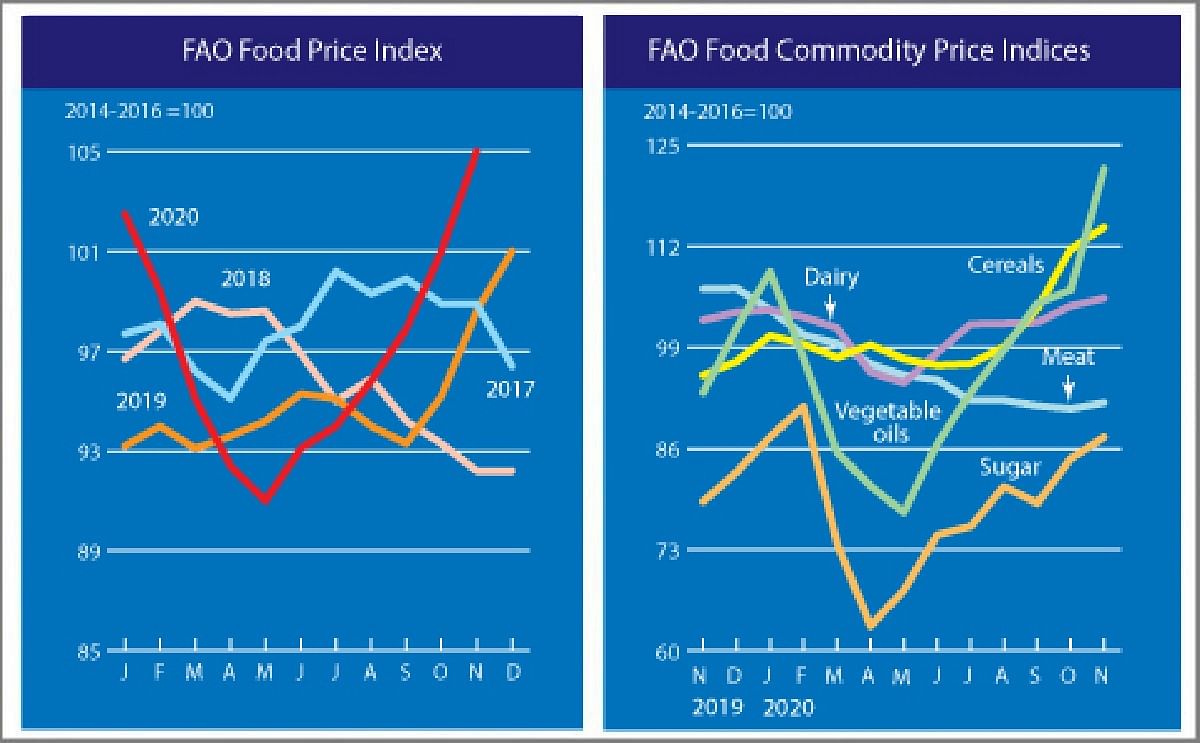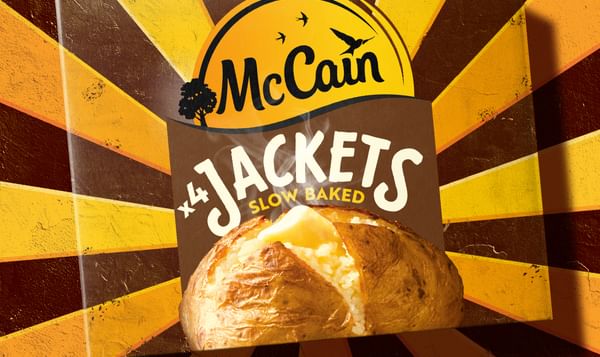FAO Food Price Index registered a sharp rise in November to its highest level in nearly six years
FAO Food Price Index registered a sharp rise in November to its highest level in nearly six years

The FAO Food Price Index* (FFPI) averaged 105.0 points in November 2020, up 4.0 points (3.9 percent) from October and 6.4 points (6.5 percent) higher than its value a year ago.
The November increase did not only mark the biggest month-on-month rise since July 2012, but it also resulted in the index reaching its highest level since December 2014.
All sub-indices of the FFPI registered gains in November, with the vegetable oil sub-index rising the most, followed by those of sugar, cereals, dairy, and meat.
The FAO Cereal Price Index averaged 114.4 points in November, up 2.7 points (2.5 percent) from October and as much as 19.0 points (19.9 percent) higher than its November 2019 value. The latest increase marked the fifth consecutive monthly rise in the value of the index.
Wheat export prices continued to edge upwards in November, largely on a tightening outlook for export supplies and reduced harvest prospects in Argentina.
Maize prices also rose further in November, supported by continued large maize purchases by China, amidst further cuts to this year's production estimates in the United States of America and Ukraine, both major exporters.
Among other coarse grains, firm demand continued to push up feed barley and sorghum prices. By contrast, international rice prices held steady in November, as the support provided by tight availabilities and currency movements in selected South East Asian exporters was offset by limited demand and harvest pressure in other major origins.
The FAO Vegetable Oil Price Index averaged 121.9 points in November, gaining a stunning 15.4 points (or 14.5 percent) month-on-month and reaching its highest level since March 2014.
The rally mainly reflects additional spikes in palm oil prices, combined with further increases in soy, rapeseed, and sunflower seed oil values.
International palm oil price quotations rose for a sixth consecutive month, underpinned by sharp contractions in world inventory levels, as smaller than customary output in major producing countries coincided with firm global import demand.
As for soil, prices firmed amid subdued export availabilities in South America and upbeat import demand, notably from India.
Likewise, rapeseed and sunflower seed oil values strengthened further on limited supplies. Meanwhile, firming petroleum prices also lent support to vegetable oil prices.
The FAO Dairy Price Index averaged 105.3 points in November, up 0.9 points (0.9 percent) month-on-month, continuing the upward trend registered in recent months and nearing an 18-month record high.
The latest rise was largely driven by firmer butter and cheese prices, reflecting steady increases in global import demand and a surge in retail sales in Europe coinciding with the region’s milk production reaching seasonal lows.
By contrast, following six months of consecutive increases, skim milk powder prices dropped due to a slower pace of purchases in Asia, especially China, coupled with increased global export availabilities, including India's powder surpluses.
Despite a rise in demand for spot supplies from the Middle East and North Africa, especially Algeria, smaller purchases by China weighed on whole milk powder price quotations.
The FAO Meat Price Index** averaged 91.9 points in November, up 0.8 points (0.9 percent) month-on-month, marking the first increase since January, but still 14.6 points (13.7 percent) below its value in the corresponding month last year.
International bovine meat prices increased, after four months of consecutive declines, due to robust demand from China and tight supplies from Oceania.
Pig meat prices recovered slightly, underpinned by a fast pace of purchases by China amidst low availability of slaughter-ready animals in Brazil, while Germany and Poland remained banned from exporting to the Asian markets over African swine fever outbreaks.
Ovine meat prices also rose, mainly because of firm import demand from China and low supplies from Oceania. By contrast, poultry meat quotations fell, reflecting increased shipments from leading producers amidst subdued international import demand.
The FAO Sugar price index averaged 87.5 points in November, up 2.8 points (3.3 percent) from October, representing the second consecutive monthly increase. The increase in international sugar quotations in November was mainly underpinned by firmer new data supporting earlier expectations of a global production shortfall in the 2020/21 marketing season.
These expectations result from weaker crop prospects in the EU, Thailand, and the Russian Federation, as unfavorable weather conditions had negatively impacted yields. Sugar prices also received further support in the aftermath of hurricane-damaged sugarcane crops and infrastructure in Nicaragua, Honduras, and Guatemala.












